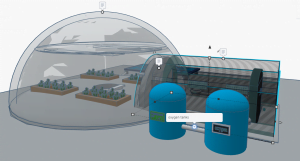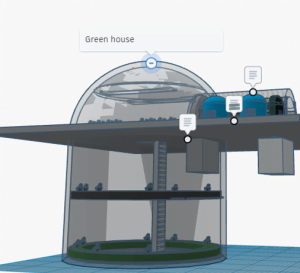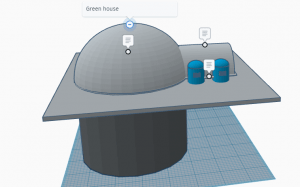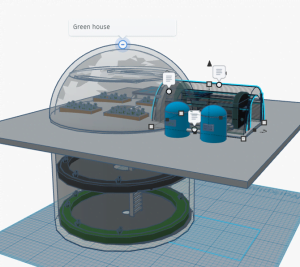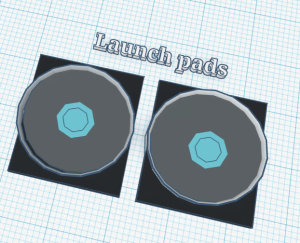Moon Camp Explorers Gallery 2020-2021
In Moon Camp Explorers each team’s mission is to 3D design a complete Moon Camp using Tinkercad. They also have to explain how they will use local resources, protect astronauts from the dangerous of space and describe the living and working facilities.
Team: Lunar Dust
John A. Sutter Middle School Winnetka United States 14
External link for 3d
|
Project description
The base supports 4-8 astronauts! The overall design was inspired by resources availability. The base will be built on the South Pole because there is a lot of sunlight. The base will be part underground and part of above ground. Lunar soil, water ice from craters, and sunlight are the local resource used. Some technological solutions include solar panels, a greenhouse, and back-up batteries. The underground base will provide protection from meteorites and radiation. The astronauts will sleep, and prepare food underground they will use the above ground inflatable facilities for work purposes. |
|||
|
Where do you want to build your Moon Camp?
Close to the Lunar Poles Why did you choose this location?
The moon camp will be located near the south pole of the moon where the sunlight will last for a long time and the solar panels will produce enough electricity for the Moon Camp. This will also mean that we can travel to cold traps that are near the camp to get ice samples and rock samples to get more information about the solar system. This location will also make it possible to communicate back to earth since the signal won’t be blocked by anything. How do you plan to build your Moon Camp? Which materials would you use?
We would build our camp using rovers controlled from earth to eliminate the possibility of any casualty. Our camp would be composed of 3D printed materials and Kevlar. Explain how your Moon Camp will provide the astronauts with:
|
|||
|
Water
|
Food
|
Electricity
|
Air
|
|
Lunar water can be found in the form of ice in the craters at the Moon’s poles. In order to secure the water source, we will use mirrors to reflect the Sun’s rays into the craters. We will set up pipes to channel water into a filtering system to have water available. We will also use the ISS water recovery system to collect and recycle moisture from astronaut breathing, sweat, and urine to use in the moon camp. We will also recycle and filter water from sinks and bathing to use for farming. Avoiding replenishing water will reduce the launch weight and cost. |
We will grow Chinese cabbages, tomatoes, corn, potatoes and other varieties of vegetables. Lunar regolith contains essential ingredients to support plant growth, however it requires a large amount of water. To conserve water, we will use bio waste. We will use a greenhouse prototype that uses UV lights to support plant growth to model the experiment done by Chinese scientists. To increase our chances of a good harvest, we will also grow crops using the hydroponics. This process also requires less water usage. We will raise meal worms for protein since they can grow in an aquarium indoors. |
We will primarily use solar power to get electricity. We considered nuclear power, but we think solar is best because it’s sustainable. We will store extra solar energy in batteries as a back up plan. |
There are two ways to create oxygen. You can use algae or plants. We are going to use plants although plants need a bit more space than algae. We think plants are better to use because you can make them into a nice meal too. Algae will be our backup plan for oxygen. We could also use lunar soil but it is a lot harder to get out the oxygen because you need to heat the soil a lot. |
|
Describe a day on the Moon for one of your Moon Camp astronauts
The astronauts day is like ours except they have no gravity. They go to the bathroom , eat breakfast and then exercise. After exercising they get to work. They check everything is working correctly. They then work on experiments, have lunch and have rovers do work. After dinner they brush their teeth and go to sleep. |
|||



